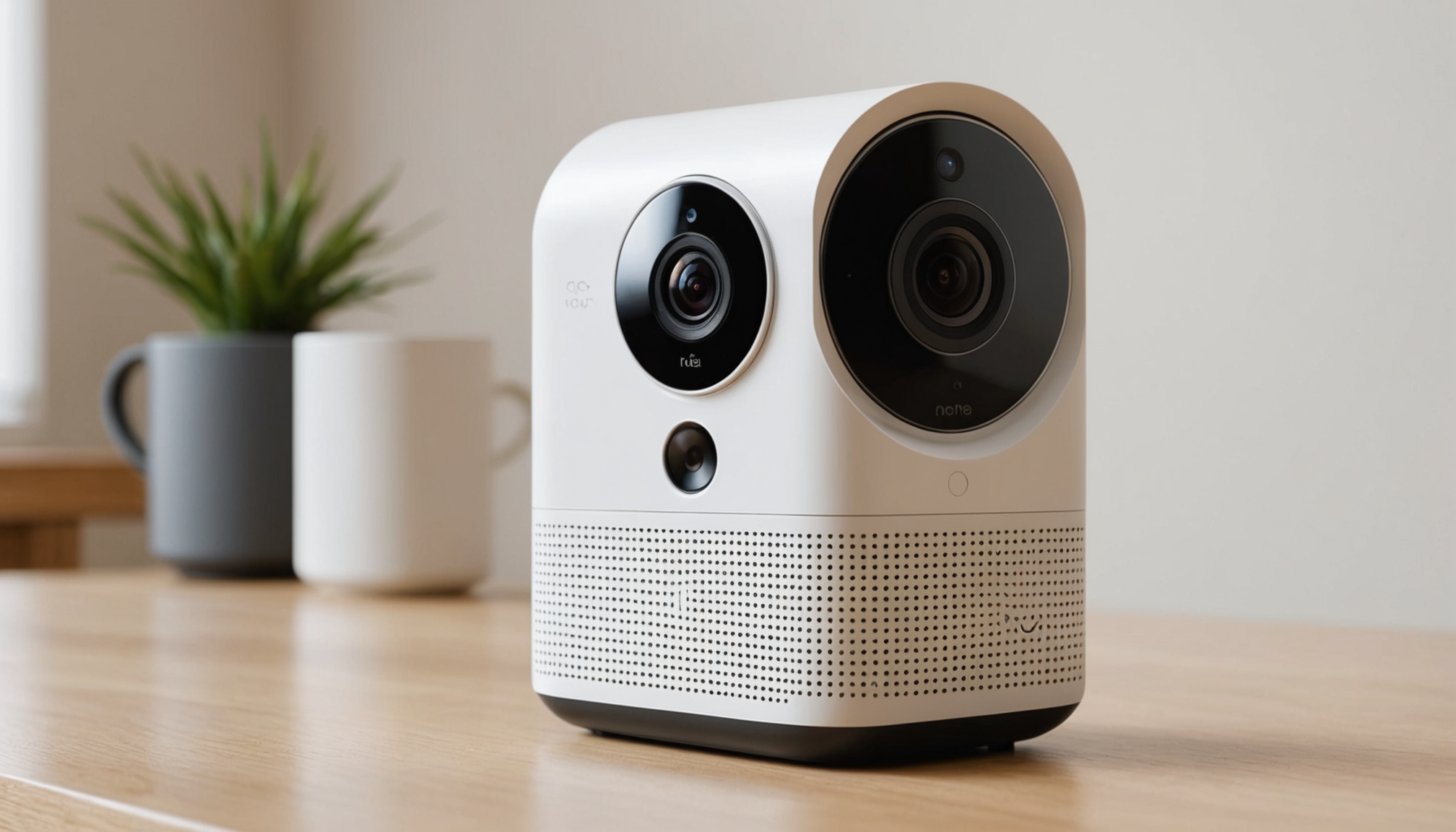Smart home security systems have become an integral part of modern living, offering a range of solutions to fit various needs and budgets. As you explore the different types of these systems, it’s important to understand the primary categories available so you can make an informed decision that balances functionality with cost-effectiveness.
Primarily, smart home security systems can be classified into three main types: DIY systems, professionally installed systems, and hybrid systems.
- DIY Systems: These systems are designed for individuals who prefer to take control of the setup and installation process. Typically, DIY systems are wireless, meaning they do not require any complex wiring or drilling—making installation straightforward, even for those who lack technical expertise. The affordability of these systems is a major advantage, often featuring lower upfront costs compared to professionally installed systems. However, while they may be budget-friendly, the selection of features can vary significantly between brands.
- Professionally Installed Systems: These systems offer a comprehensive and seamless security service by involving experts to handle the installation. Professionally installed systems tend to be more expensive upfront due to labor and the use of high-quality equipment, but they promise a tailored fit for your home security needs. This option is ideal for homeowners who prefer having local professionals ensure everything is operational and integrated correctly. The cost, although higher, often includes a broad array of features like advanced sensors, high-definition cameras, and sometimes, a direct connection to a local monitoring center.
- Hybrid Systems: Bridging the gap between DIY and professionally installed systems, hybrid systems offer a degree of flexibility by allowing homeowners to install certain components themselves while leaving the more complex aspects to the professionals. This combination can optimize costs by minimizing labor expenses while still ensuring critical components are handled by experts. Hybrid systems cater to those who enjoy the independence of DIY installations but acknowledge the benefits of professional expertise for specific elements of the security setup.
Below is a table summarizing the key differences among these types of smart home security systems:
| Type | Installation Process | Cost | Main Advantage | Main Disadvantage |
| DIY Systems | Self-installed, no professional assistance required | Lower initial costs | Cost-effective and flexible | May lack extensive features and professional oversight |
| Professionally Installed Systems | Installed by experts, often requiring local technicians | Higher initial and installation costs | Comprehensive setup with expert installation | Higher upfront costs with ongoing service fees |
| Hybrid Systems | Combination of DIY installation and professional help | Moderate costs, varies by customization | Flexible and customized fitting | Varies widely in features and service |
As you consider these options, think about the level of control and involvement you want in securing your home, as well as how each type aligns with your budgetary constraints. Knowledge of these system types is fundamental in selecting the best smart home security solution that not only fits your immediate needs but also can be scaled or upgraded over time.
Key features affecting costs
When evaluating the cost of smart home security systems, it’s crucial to understand how specific features can significantly influence the overall expense. Here’s a breakdown of the key components you need to be aware of when comparing different systems:
1. Cameras and Video Monitoring
- Resolution and Image Quality: High-definition cameras will offer better video clarity, which can be critical for identifying faces or license plates. However, higher resolution often means higher costs.
- Field of View: Cameras with a wide-angle lens may cover more area, potentially reducing the number of cameras needed for full property coverage, although these can be more expensive upfront.
- Night Vision and Low-Light Performance: Cameras equipped with infrared or low-light technology can be crucial for security during nighttime hours. Enhanced night vision features can raise costs significantly.
- Cloud Storage vs. Local Storage: Both options have cost implications. Cloud storage generally involves monthly fees, while local digital video recorders (DVRs) may require a higher initial investment but avoid recurring costs.
2. Sensors and Motion Detectors
- Types of Sensors: The variety of sensors—such as door/window sensors, motion detectors, glass break sensors, and environmental sensors like smoke and carbon monoxide detectors—expand the security coverage but also increase costs.
- Sensitivity and Range: Sensors with adjustable sensitivity and a larger detection range usually come with a heftier price tag, but they can offer more comprehensive protection.
3. Smart Home Integration
- Compatibility with Other Devices: Systems that integrate with existing smart home devices like voice assistants or smart locks offer greater flexibility and convenience but might require additional components or software.
- Automations and Customizations: Systems offering advanced automation and scene-setting capabilities typically require a more sophisticated hub, which can increase costs.
4. Remote Access and Control
- Mobile App Features: A system that provides an intuitive and feature-rich mobile app—enabling live streaming, notifications, and remote management—could result in higher subscription or service fees.
- User Accounts and Permissions: Supporting multiple users with different access levels can involve additional costs if the system requires enhanced security measures or more complex setups.
5. Durability and Weatherproofing
- Outdoor vs. Indoor Use: Outdoor cameras and devices need to be weatherproof, which often makes them more expensive than indoor components due to the robust materials and construction required to withstand the elements.
6. Advanced Security Features
- Facial Recognition: This advanced technology can increase costs, as it often requires sophisticated hardware and software to function effectively.
- Alerts and Notifications: Systems offering real-time alerts and the ability to customize notifications may command higher monthly fees, especially if they use advanced analytics to reduce false alarms.
Taking these features into account can help you better understand how each component affects the total cost of ownership for a smart home security system. By evaluating which features are essential for your personal security needs, you can strategically select a system that balances functionality and budget, ensuring optimal protection without unnecessary expenditure.
Installation and setup expenses
When planning for the installation and setup of a smart home security system, it is important to understand that expenses can vary significantly based on several factors, including the type of system you choose, the complexity of the setup, and any additional components that might be required.
The installation process for DIY systems is generally the most cost-effective option—these systems are designed for simplicity. Most DIY kits are wireless, eliminating the need for professional installation services. You can often complete the installation using basic tools, following detailed guides provided by the manufacturer. This reduces labor costs but requires your time and effort. For tech-savvy individuals or those who enjoy hands-on projects, this route can lead to substantial savings.
Conversely, professionally installed systems tend to incur higher costs. These systems usually involve robust and possibly intricate equipment that needs expert handling to ensure effective operation. Professional installers can charge a flat rate or an hourly fee, which can add significantly to the initial outlay. The benefit, however, is peace of mind. Experts ensure that every component is set up optimally, reducing the risk of errors that could lead to compromised security. Often, these upfront costs are justified by the system’s reliability and by any additional support services that may be bundled with the installation, such as warranty extensions or maintenance packages.
Hybrid systems offer a middle ground, where you have the option to manage simpler installations yourself while delegating the more complicated components to professionals. This can be a strategic choice if you want to control costs but still want the assurance that critical elements, such as camera placements or network configurations, are expertly handled. Costs here depend on the complexity of the professional tasks and any additional consultations needed.
Further influencing installation costs is the size and layout of your property. Larger homes with multiple entry points or unconventional designs may require more extensive setups, increasing time and expense. Also, integrating new systems with existing smart devices or older security hardware may necessitate additional custom work, raising both complexity and costs.
Additional components, such as extra sensors or cameras with enhanced features, might be necessary to address specific security needs or to cover larger areas. This customization can also affect installation expenses, especially if it involves retrofitting parts of your home.
To navigate these expenses effectively, it is advisable to seek quotes from multiple local providers to understand typical installation rates for your specific security system. Comparing these will give you a better idea of competitive pricing in your area, allowing you to make an informed decision that aligns with your budget while fulfilling your security needs.
Ultimately, whether opting for a DIY system, professional installation, or a hybrid approach, carefully considering your home’s specific requirements and balancing them with your budget will guide you to the most appropriate and cost-effective solution.
Monthly monitoring fees
While the initial purchase of a smart home security system is a key component of your overall investment, it’s important to consider ongoing expenses that contribute significantly to the total cost of home security. One such recurring expense is monthly monitoring fees.
Monthly monitoring fees vary depending on the level of service and monitoring a security company provides. Many professionally monitored systems require a subscription, which grants you access to a dedicated monitoring center that operates 24/7. This service adds an additional layer of security, as trained professionals respond to alerts if a breach is detected, promptly notifying both you and the appropriate authorities if needed.
The cost of these fees can range considerably, starting from as low as $10 to over $60 per month, depending on the features included. Basic packages generally cover essential monitoring features, while premium packages offer advanced functionalities such as video storage, smart alerts, and the ability to access historical data. This sort of tiered pricing allows you to tailor the service level to match your budget and security needs, though it’s crucial to assess the value of each package in relation to the safety requirements of your home.
It’s important to review what is included in these fees since some security systems also offer additional benefits like mobile app access, smart home integration, and enhanced customer support as part of their monitoring services. These added benefits can significantly improve the convenience and effectiveness of your security setup.
Like many aspects of smart home security, the choice between different monitoring services may also depend on how they’re structured. Some systems offer no-contract, month-to-month billing, providing flexibility if your needs change, while others require long-term contracts that might lock you into particular terms for several years. This can impact costs if you find a need to upgrade, downgrade, or cancel service. Therefore, reviewing contract terms carefully before committing can prevent future headaches and unplanned expenses.
Additionally, bundling services from the same provider can sometimes yield discounts on monitoring fees. This could include integrating other home services or security products such as cameras, sensors, and smart locks, effectively enhancing the functionality of your system while maintaining cost-efficiency.
Exploring comparison tools and local service providers can aid in determining the most cost-effective and suitable monitoring plan. Websites like LocallyFind.com can be invaluable resources in this endeavor, allowing you to vet local options and calculate potential long-term savings by comparing the fees and services offered by different providers.
Remember, while monitoring fees are a continual investment, they can be crucial for ensuring a robust and responsive security system. By strategically evaluating your needs, researching local providers, and considering both short-term and long-term costs, you can find a monitoring plan that provides peace of mind without straining your budget.
Long-term cost considerations
When thinking about investing in a smart home security system, it’s essential to consider long-term financial obligations beyond the initial purchase price and monthly fees. These long-term considerations will help ensure that the system remains cost-effective and functional over time, safeguarding your home without unexpected expenses.
A critical element of long-term cost is system maintenance and upgrades. Like many electronic devices, security systems benefit from regular maintenance to ensure optimal performance and longevity. Manufacturers may offer maintenance plans that could include software updates, system check-ups, and technical support. While these plans may incur additional annual fees, they could prevent costly repairs in the future by catching issues early. Alternatively, some homeowners opt for DIY maintenance, which eliminates these fees but requires a more hands-on approach to system management.
Upgrades are another important factor. As technology evolves, new features and improved equipment become available that may enhance your system’s effectiveness. Consider whether the initial system is scalable or upgradable, as a system that allows for modular enhancements can spread costs over time. For instance, starting with essential components and adding more sophisticated sensors or cameras later can be a budget-friendly strategy to keep your home security up-to-date with minimal upfront expenses.
Battery life and replacement costs for wireless systems can also affect long-term budgets. While these systems provide flexibility and ease of installation, regular battery replacement is required to ensure continuous operation. Opting for systems with longer-lasting batteries may reduce the frequency of replacements and, as a result, lower associated costs over the years.
Furthermore, it is wise to review warranty options. Many manufacturers provide basic warranties at no additional cost, covering defects and malfunctions for a limited period. However, extended warranties or service plans for an additional fee might be worthwhile, especially for higher-end systems with complex technology. These warranties can offer peace of mind by protecting against unforeseen repair costs.
Consideration of these factors during the planning stage can significantly affect the overall financial impact of your security system. Engaging with local providers to understand their offerings, exploring flexible plans that grow with your needs, and opting for systems that promise easy upgrades without proprietary constraints can all contribute to a sustainable and cost-effective home security solution.
In conclusion, selecting the right smart home security system involves more than just comparing upfront costs. It’s a matter of balancing immediate expenses with long-term financial planning. By taking into account installation complexities, monitoring fees, essential feature costs, and future-proofing through upgrades and maintenance, homeowners can make informed decisions that ensure efficient and reliable security for their property without breaking the budget. Careful consideration of both current and future needs guarantees a secure, intelligent investment, protecting your home and offers peace of mind in the ever-evolving landscape of smart home technology.


